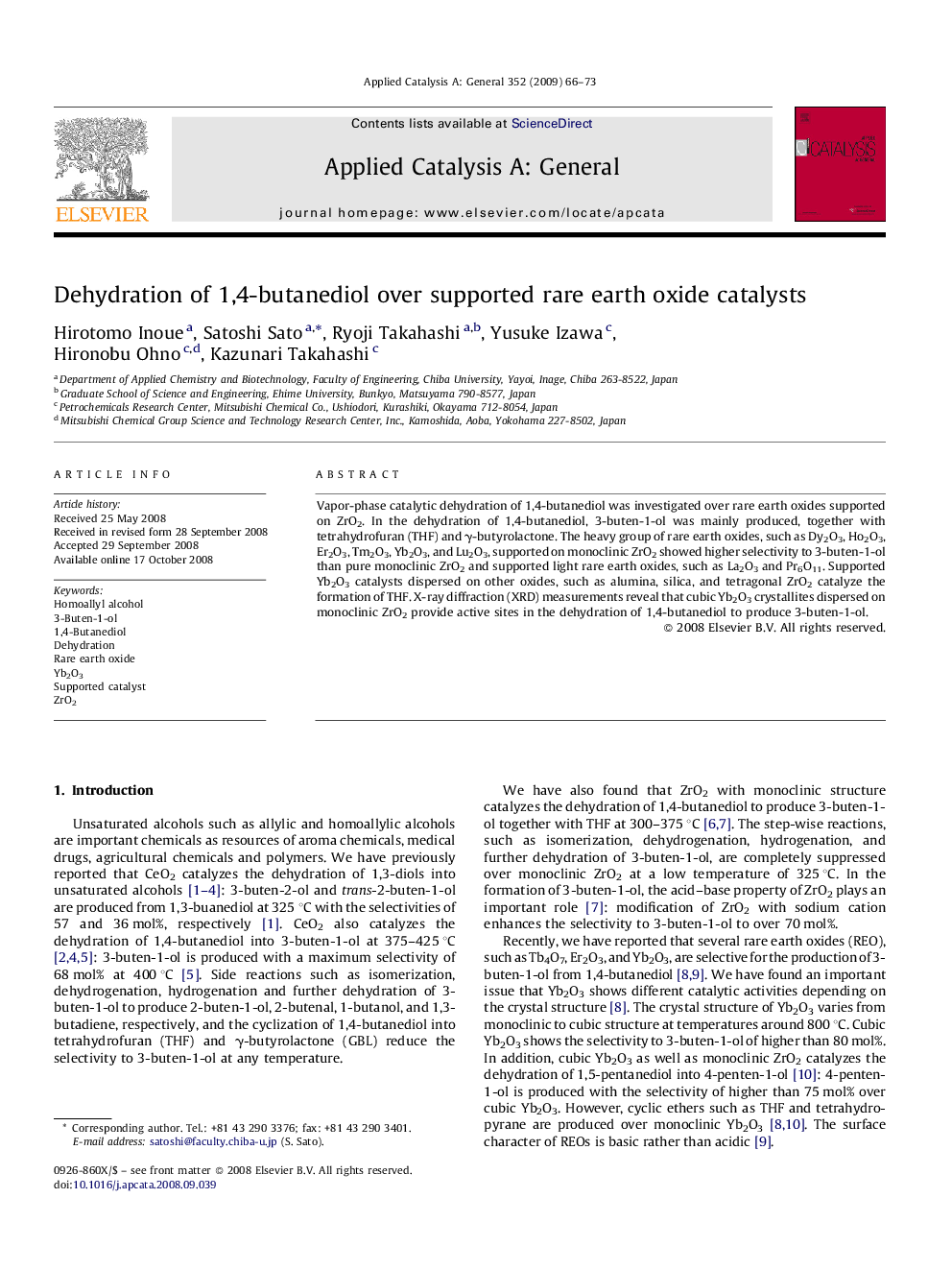| کد مقاله | کد نشریه | سال انتشار | مقاله انگلیسی | نسخه تمام متن |
|---|---|---|---|---|
| 43155 | 45957 | 2009 | 8 صفحه PDF | دانلود رایگان |

Vapor-phase catalytic dehydration of 1,4-butanediol was investigated over rare earth oxides supported on ZrO2. In the dehydration of 1,4-butanediol, 3-buten-1-ol was mainly produced, together with tetrahydrofuran (THF) and γ-butyrolactone. The heavy group of rare earth oxides, such as Dy2O3, Ho2O3, Er2O3, Tm2O3, Yb2O3, and Lu2O3, supported on monoclinic ZrO2 showed higher selectivity to 3-buten-1-ol than pure monoclinic ZrO2 and supported light rare earth oxides, such as La2O3 and Pr6O11. Supported Yb2O3 catalysts dispersed on other oxides, such as alumina, silica, and tetragonal ZrO2 catalyze the formation of THF. X-ray diffraction (XRD) measurements reveal that cubic Yb2O3 crystallites dispersed on monoclinic ZrO2 provide active sites in the dehydration of 1,4-butanediol to produce 3-buten-1-ol.
Vapor-phase catalytic dehydration of 1,4-butanediol was investigated over rare earth oxides (REO) supported on ZrO2. 3-Buten-1-ol was dominantly produced together with the formation of tetrahydrofuran. Supported heavy REOs such as Yb2O3 showed selective formation of 3-buten-1-ol. The catalytic activity is strongly dependent on the calcination temperature.Figure optionsDownload as PowerPoint slide
Journal: Applied Catalysis A: General - Volume 352, Issues 1–2, 15 January 2009, Pages 66–73